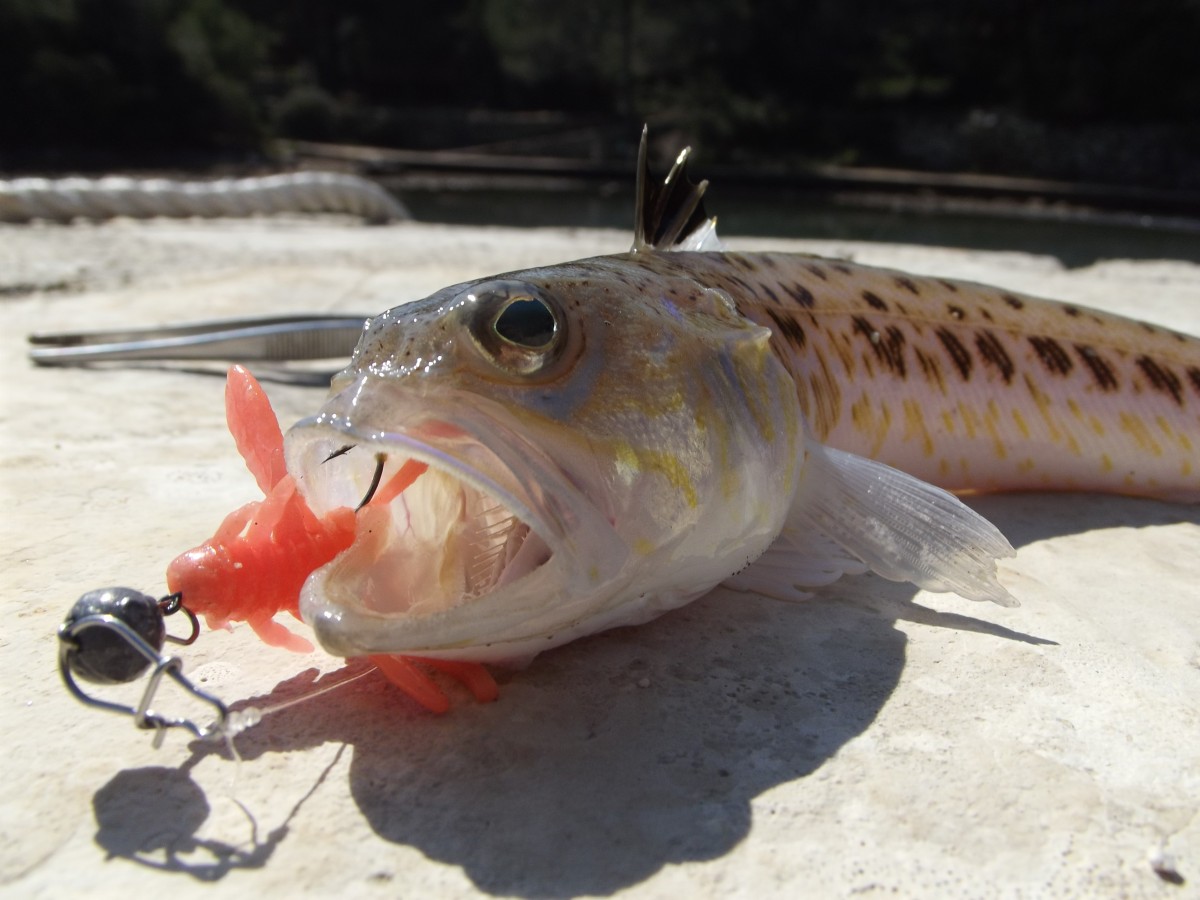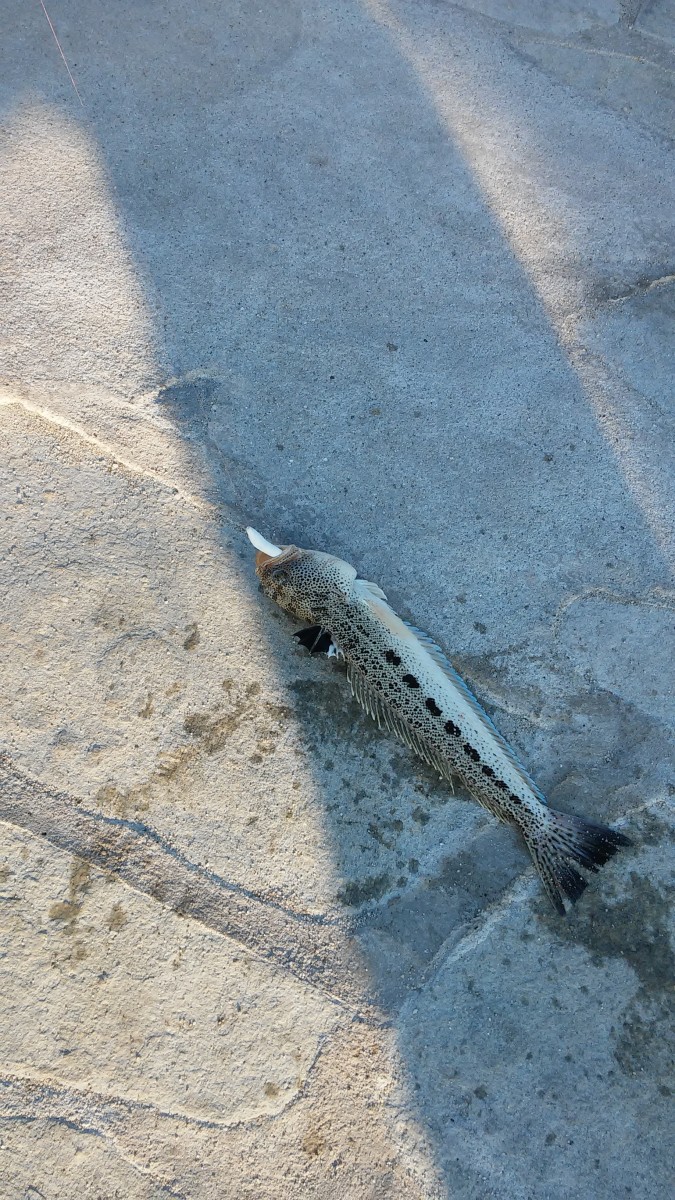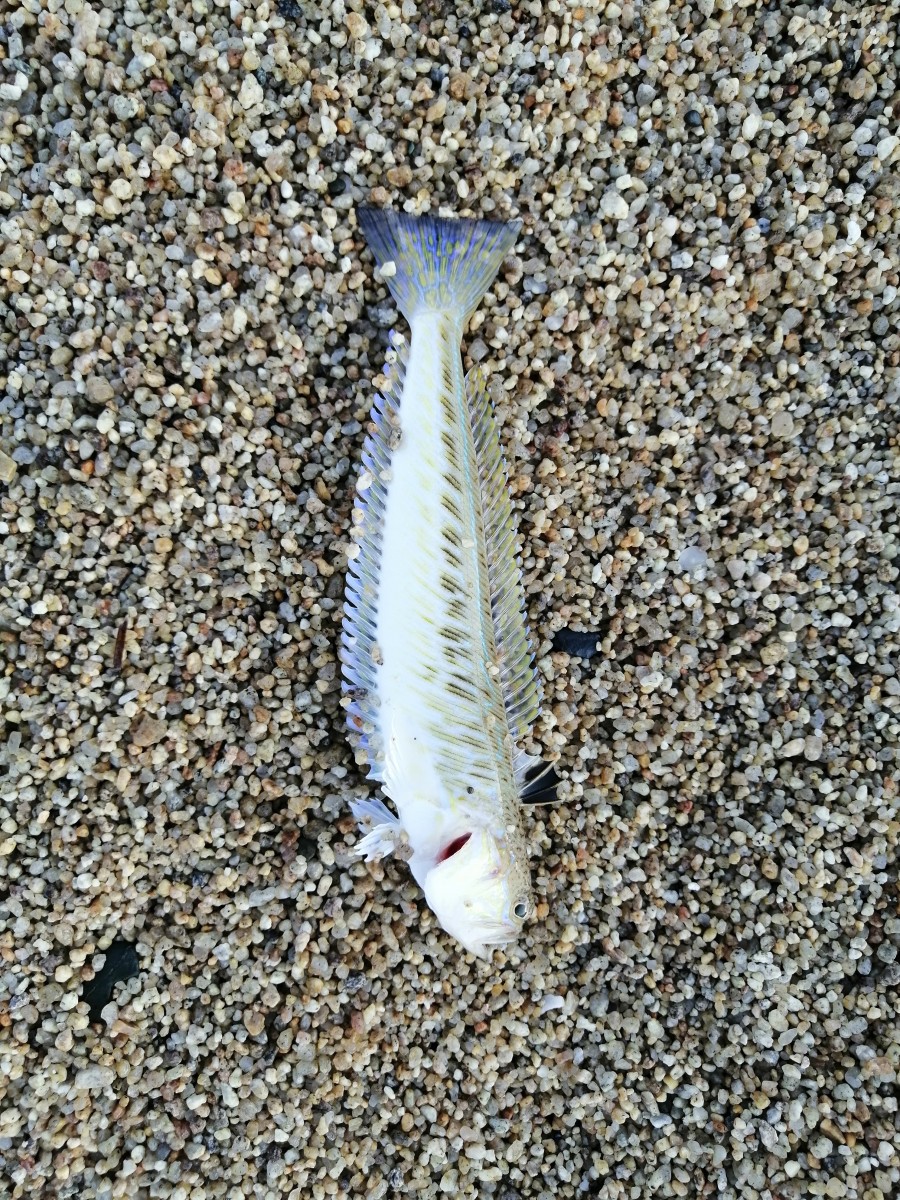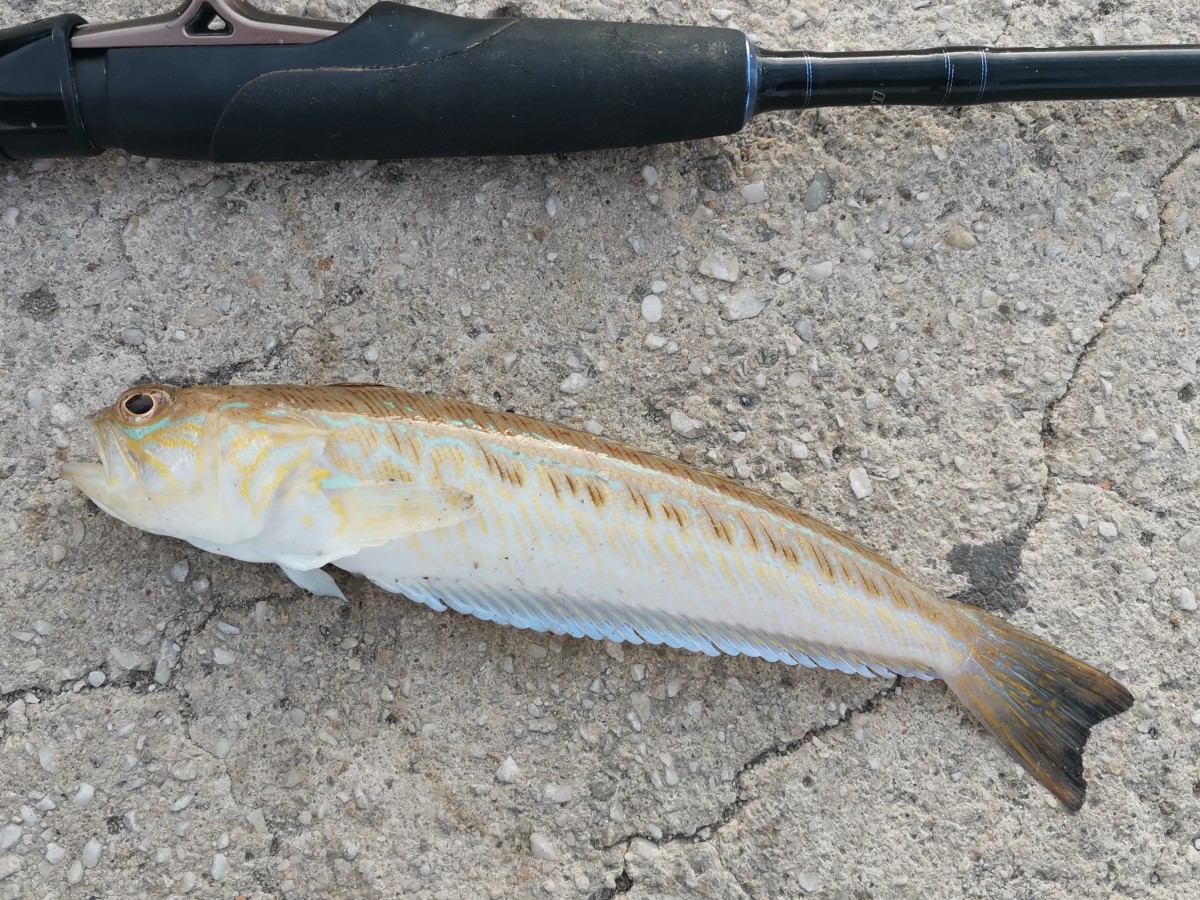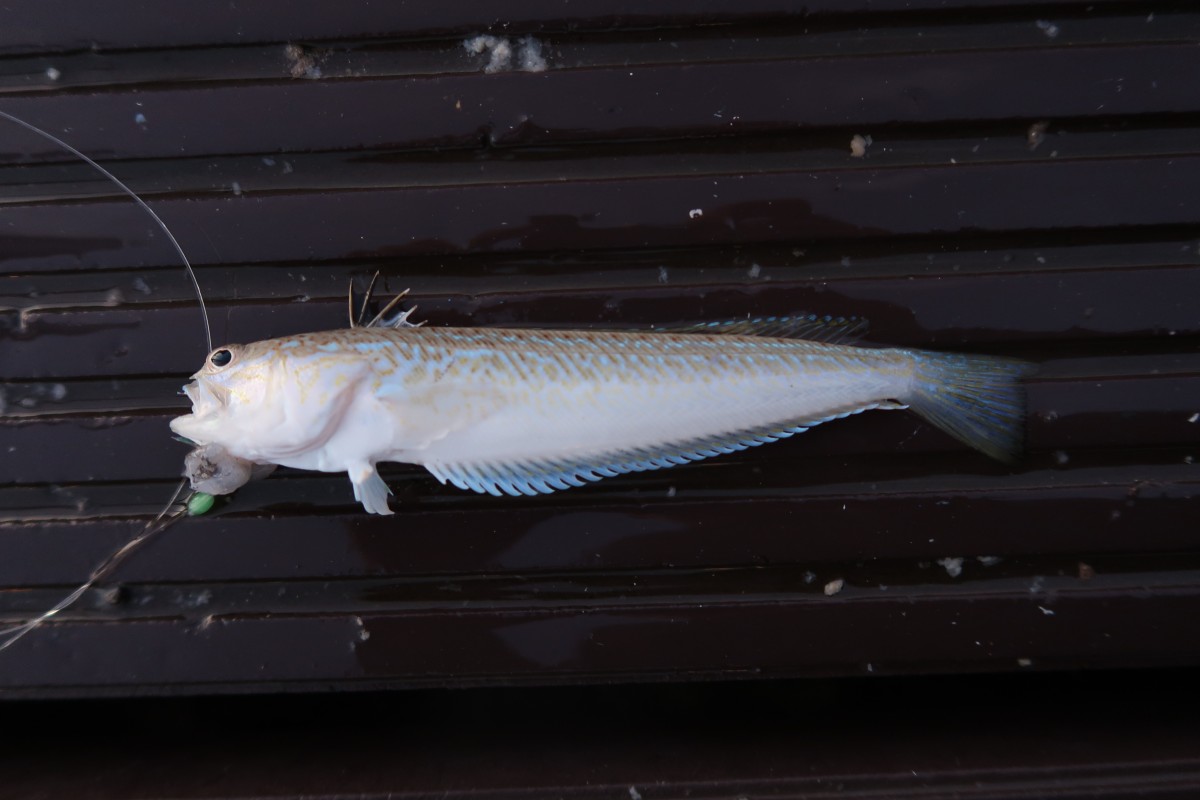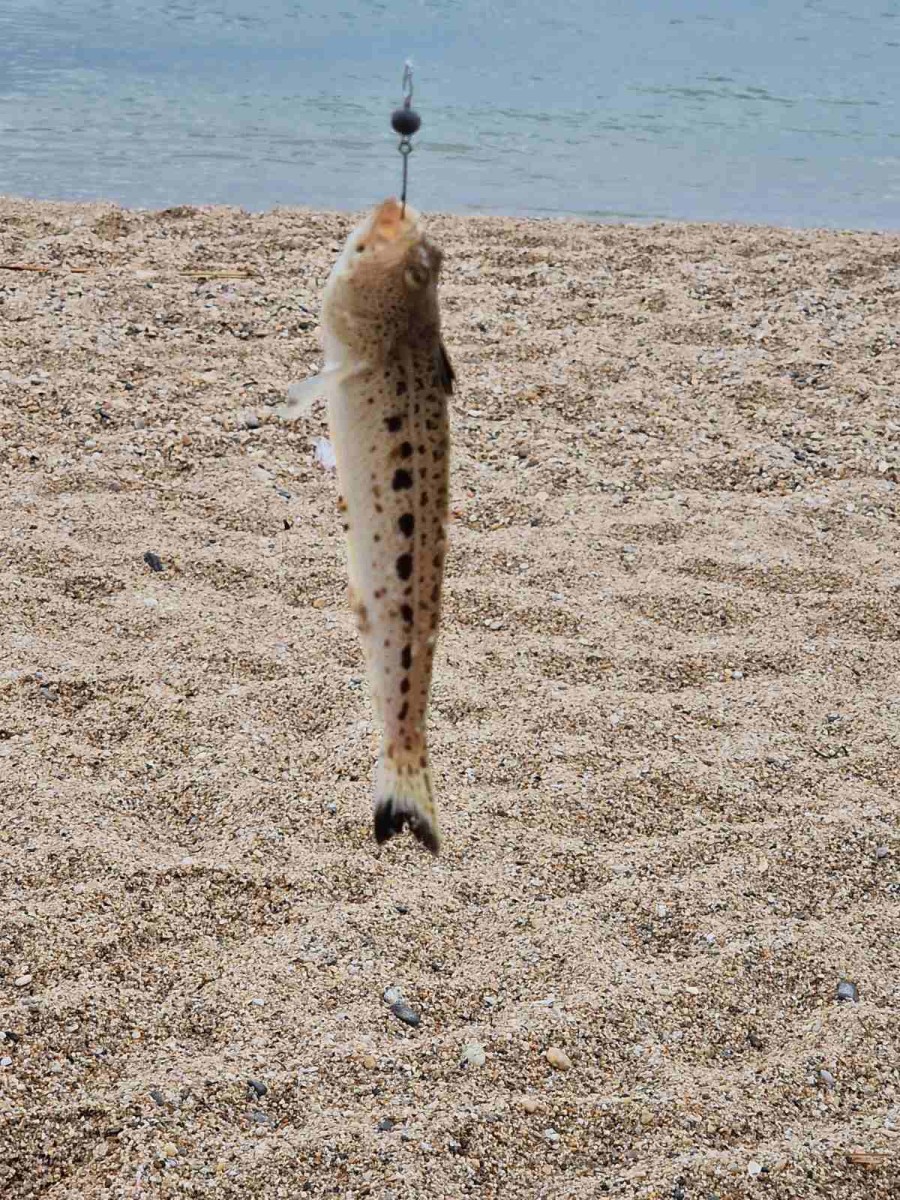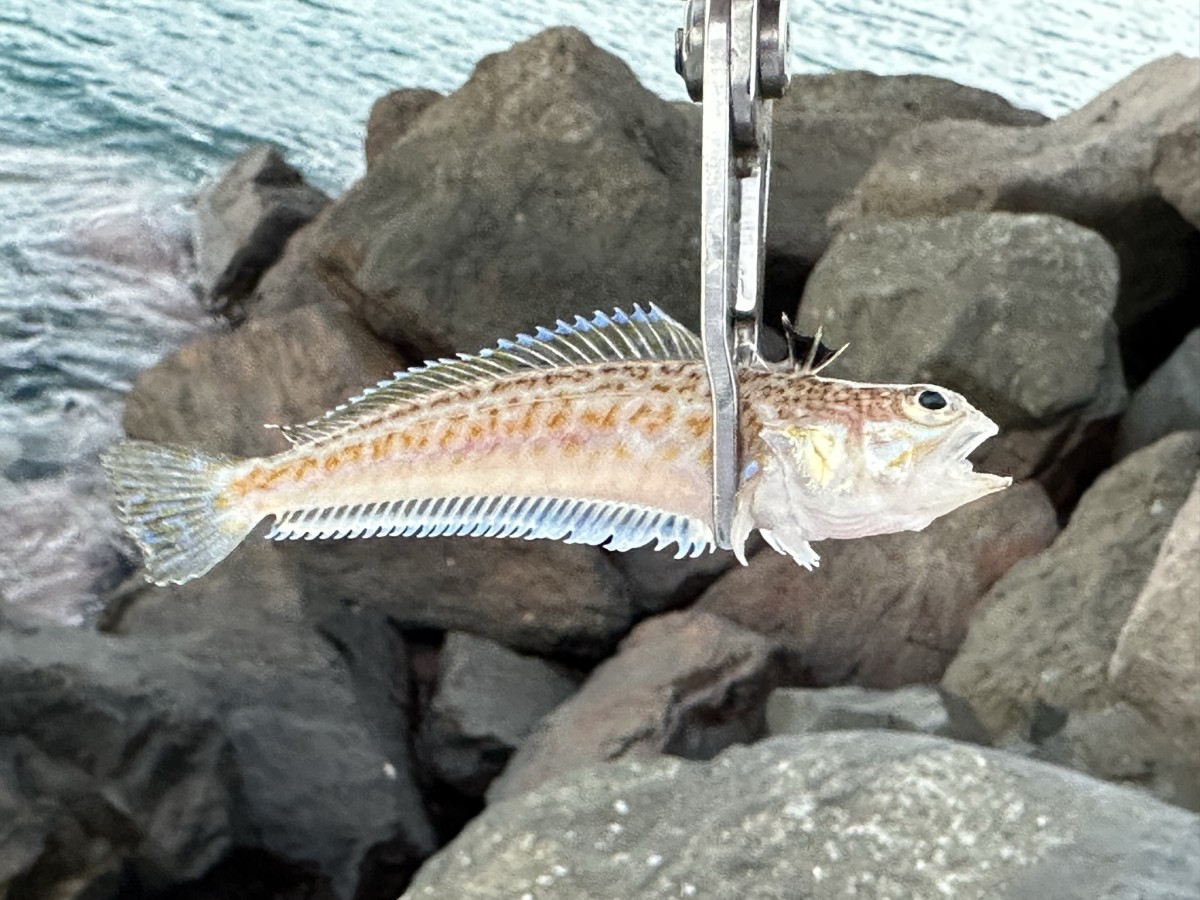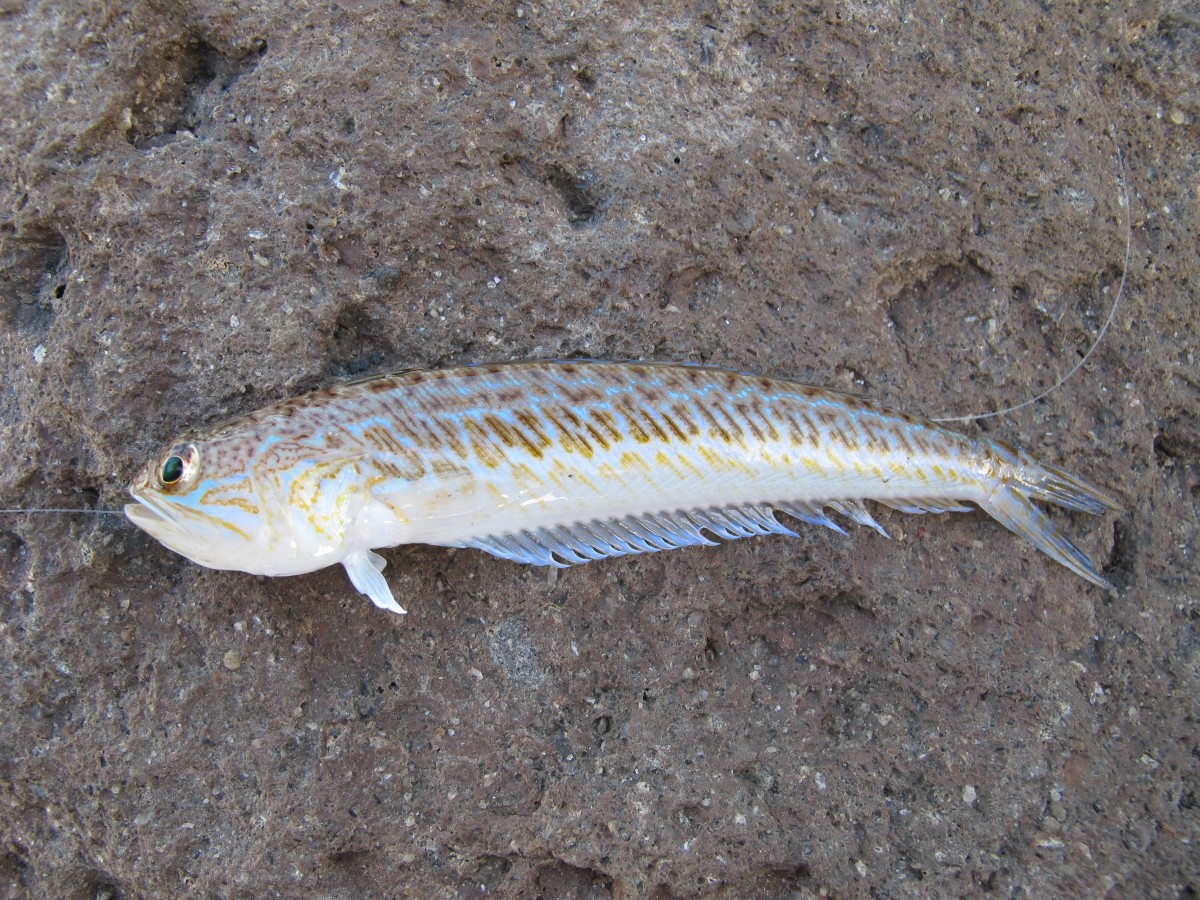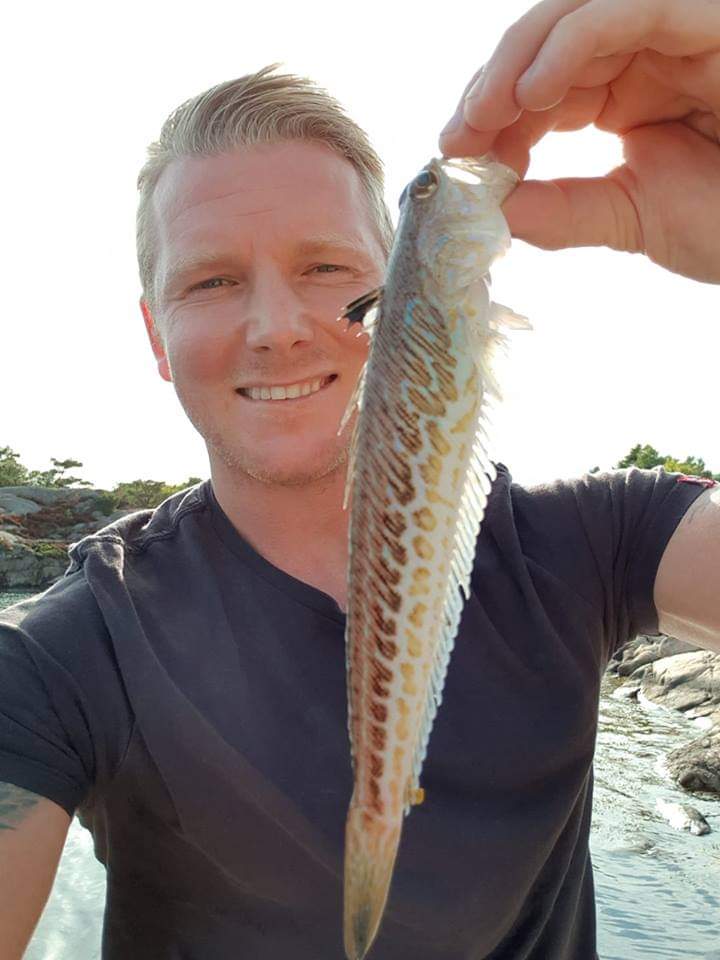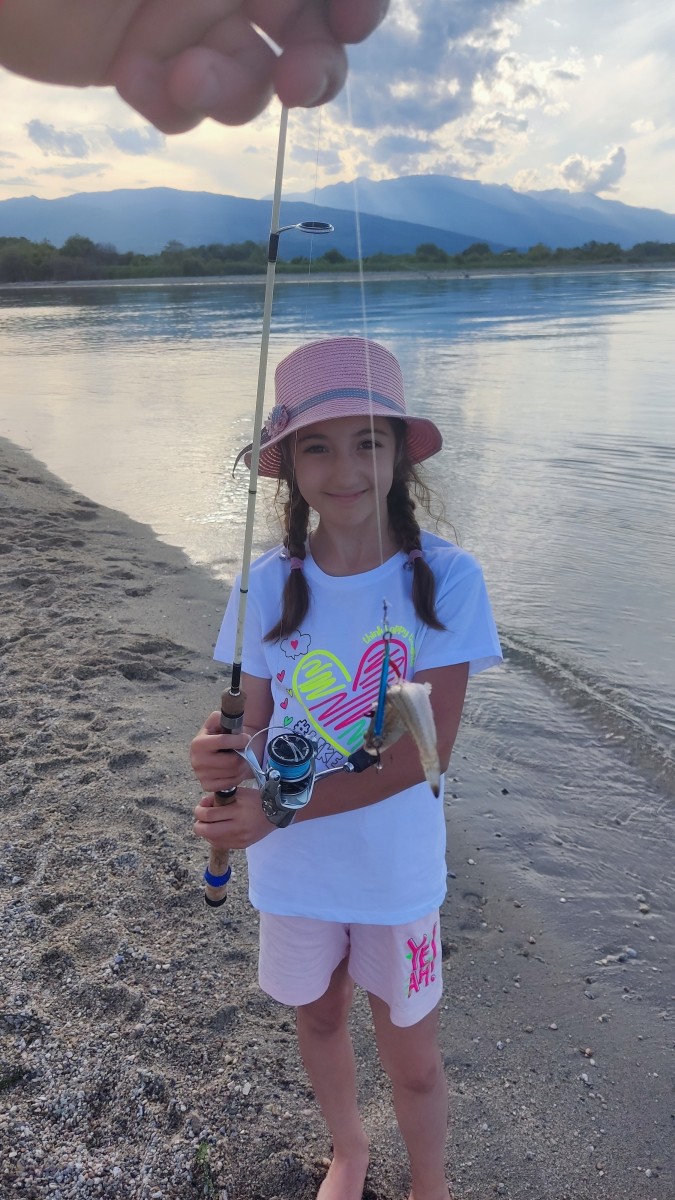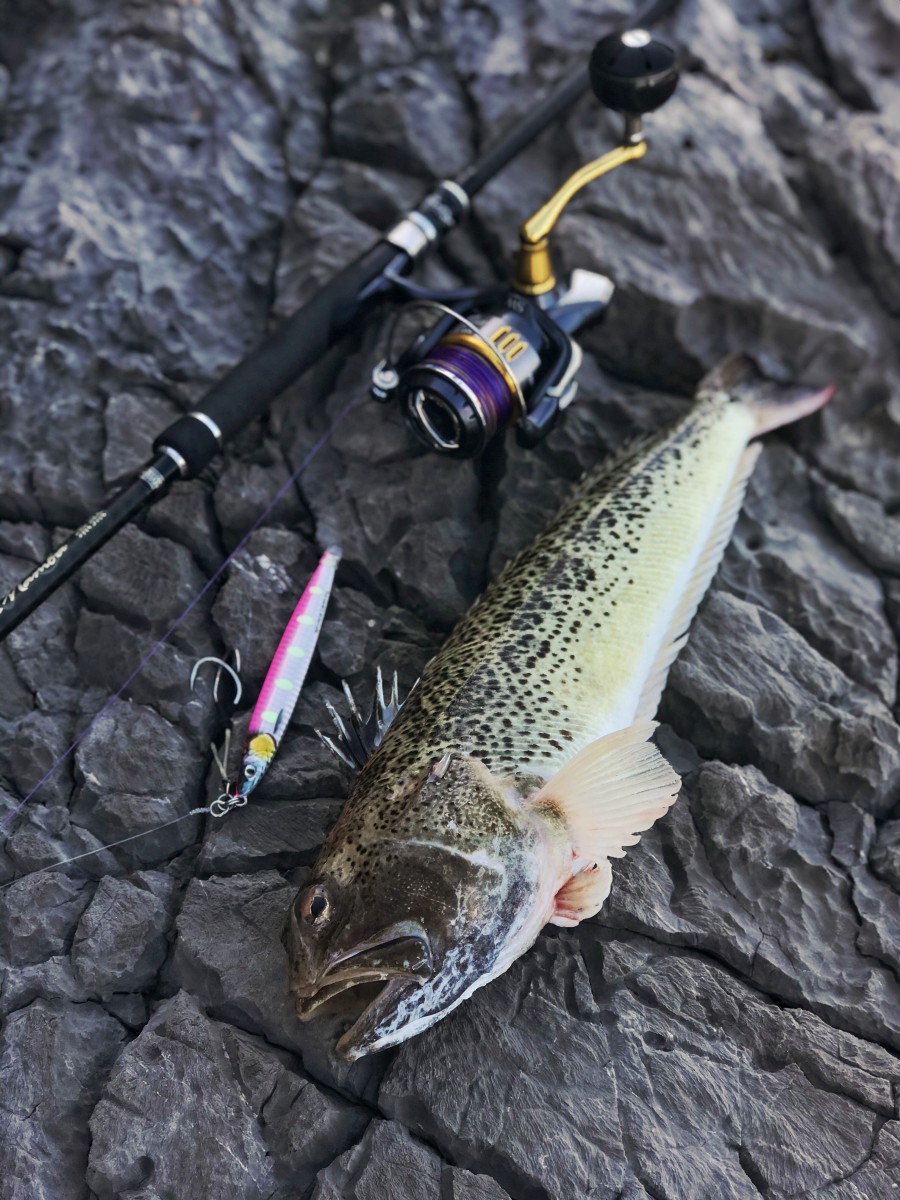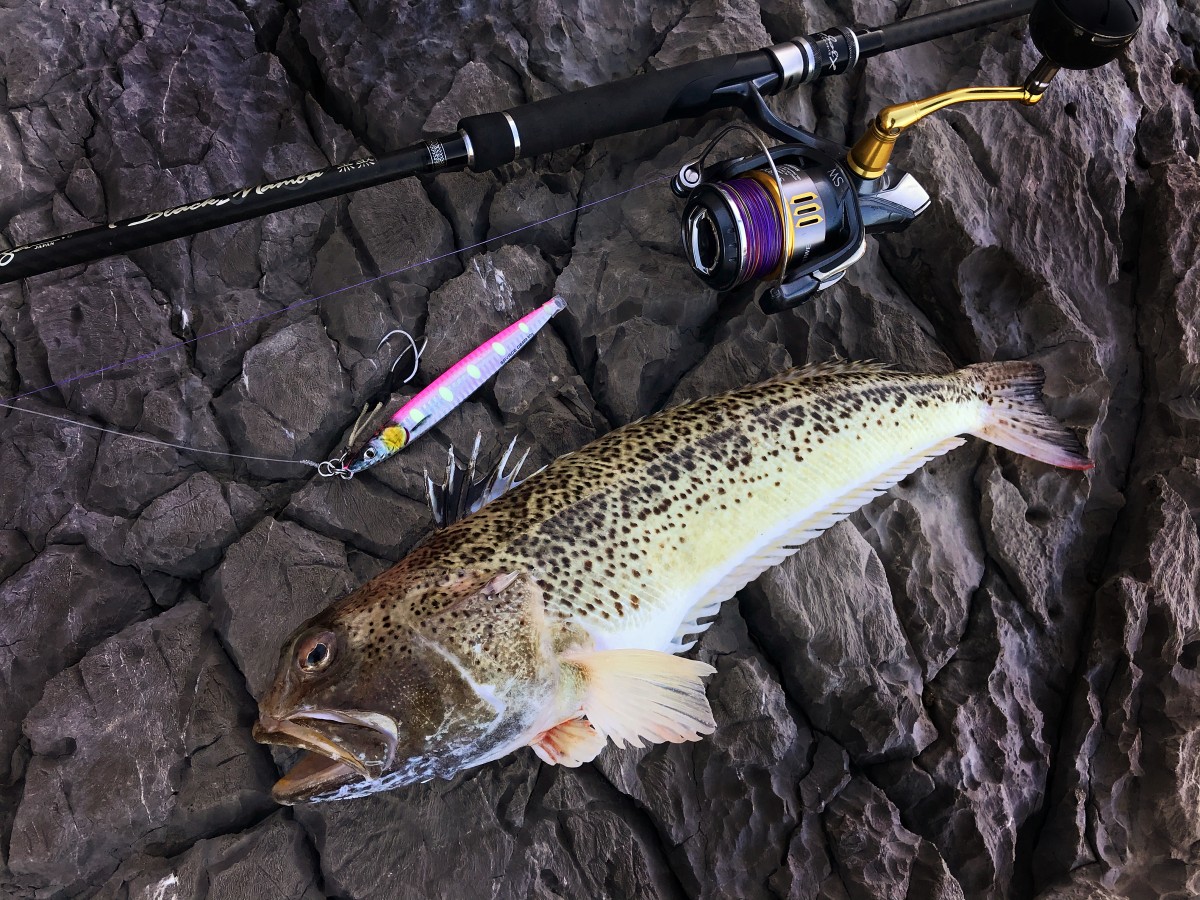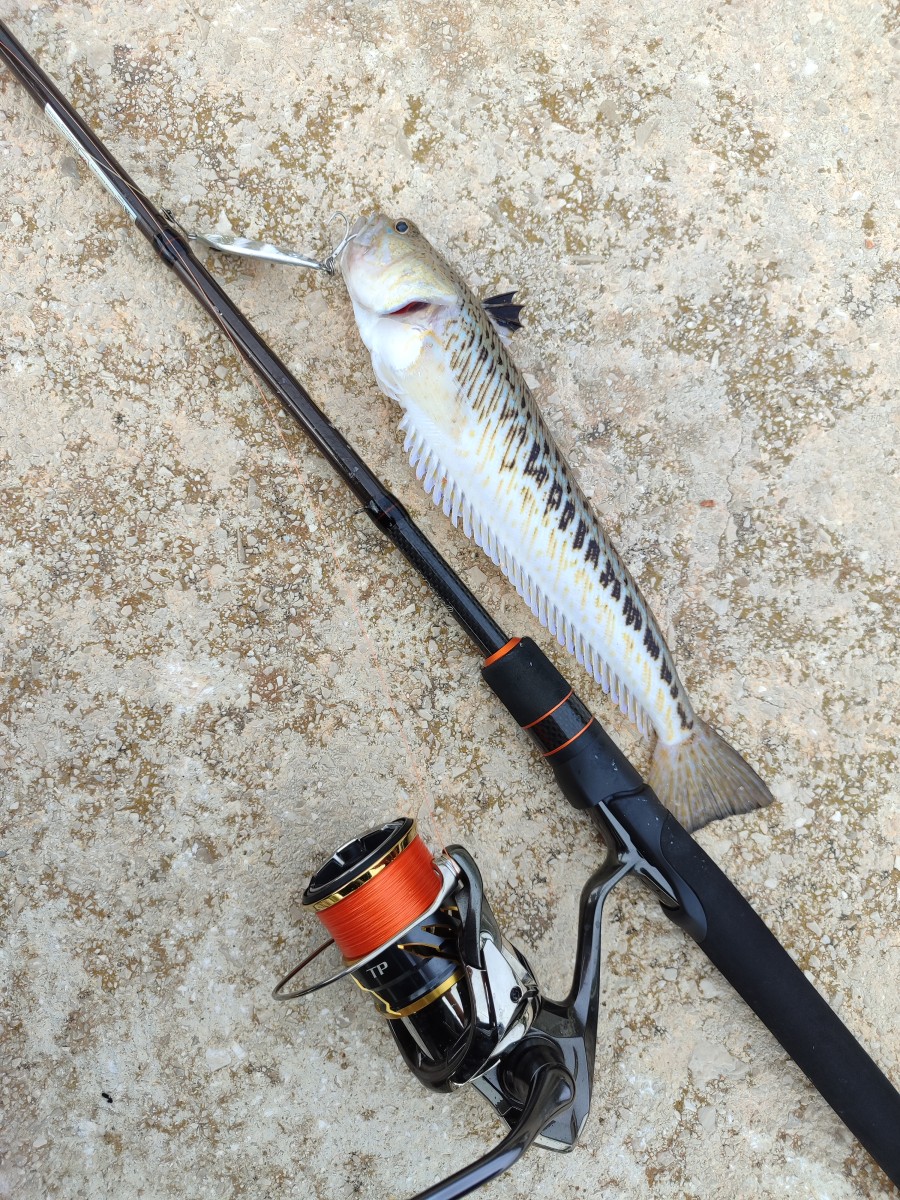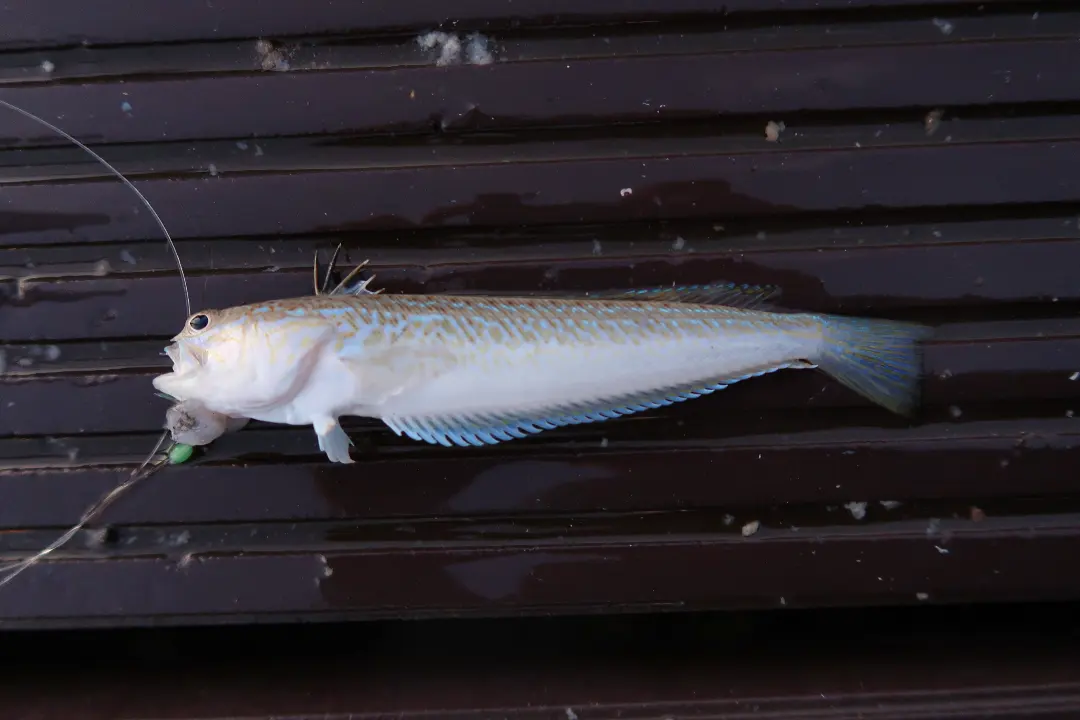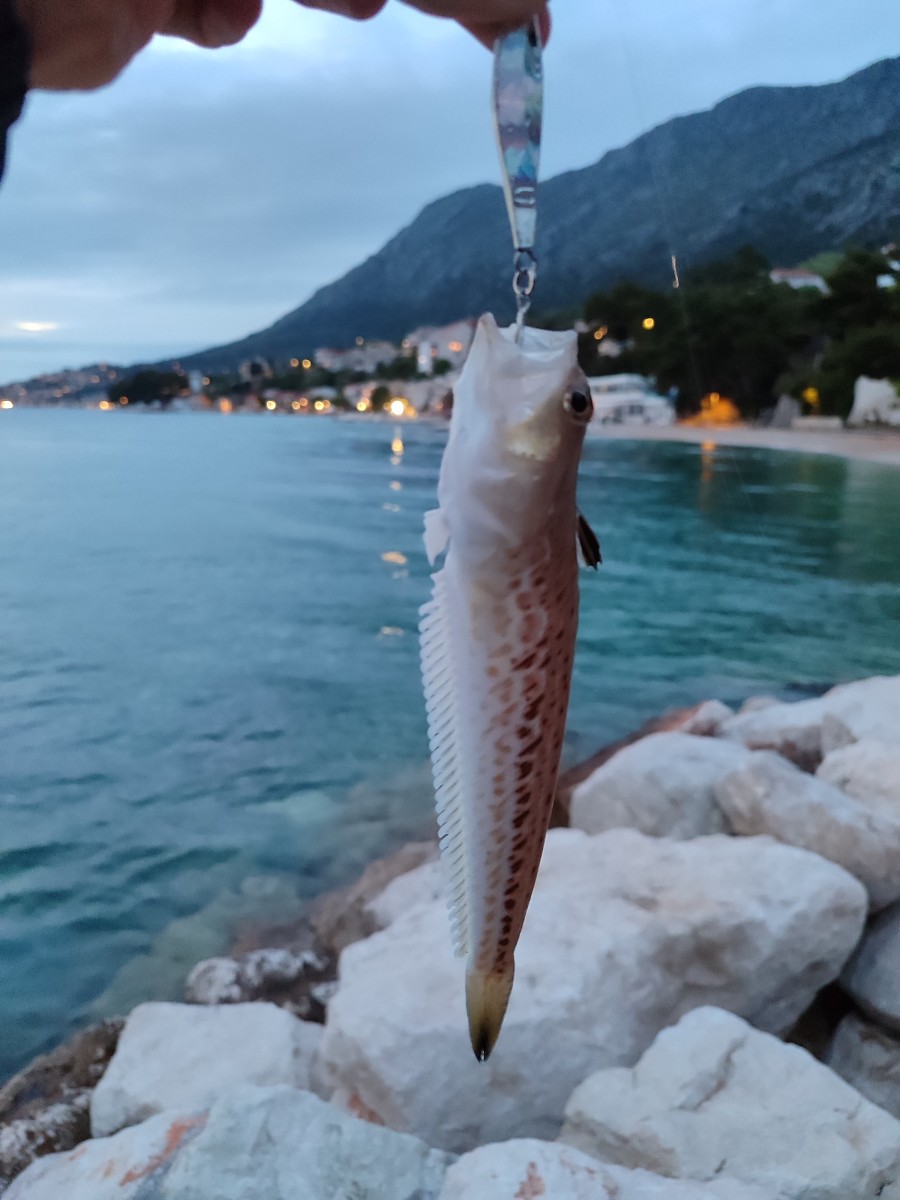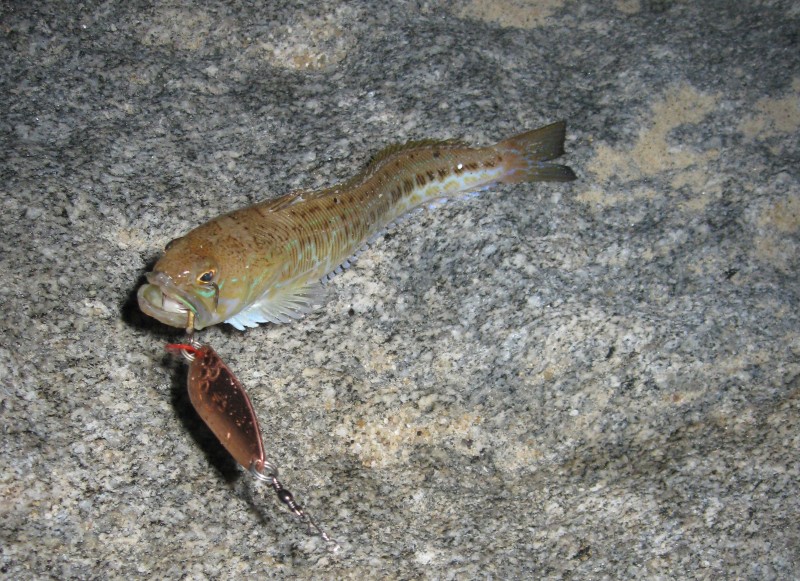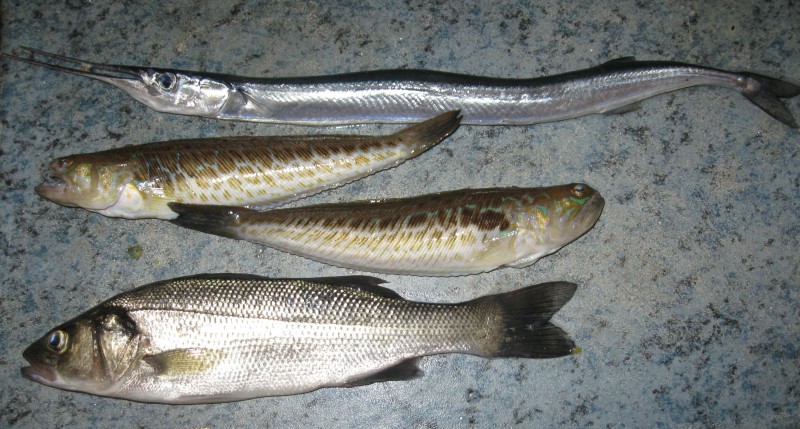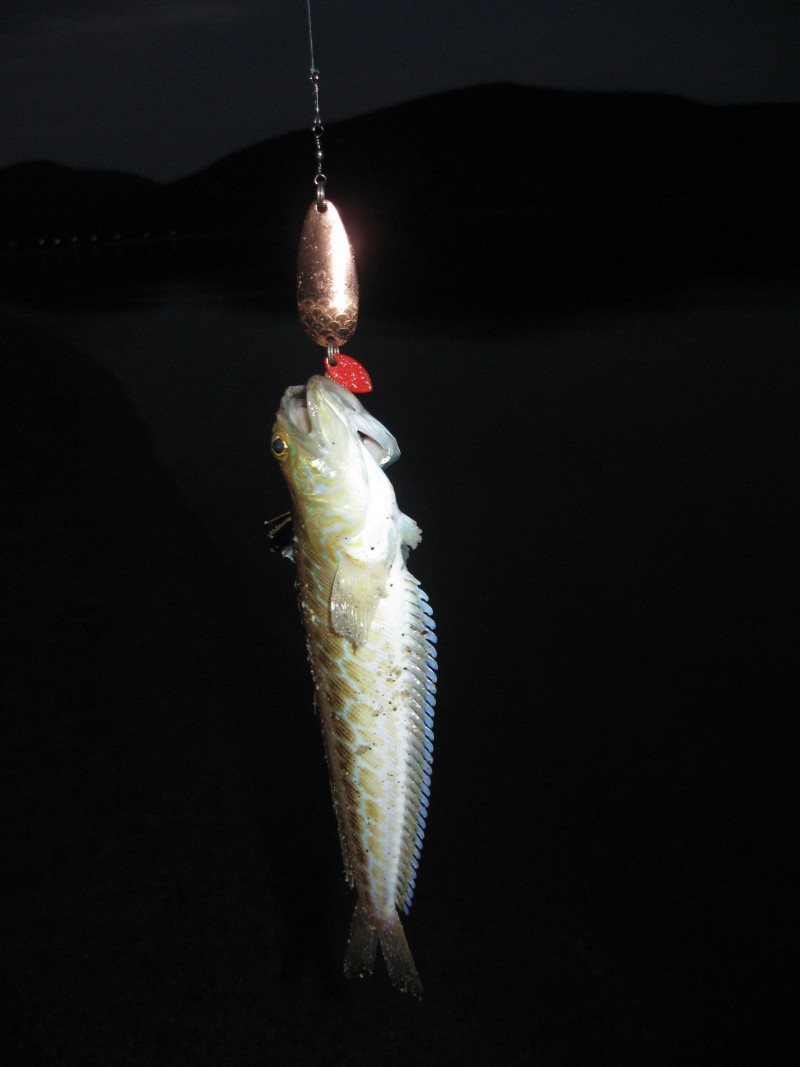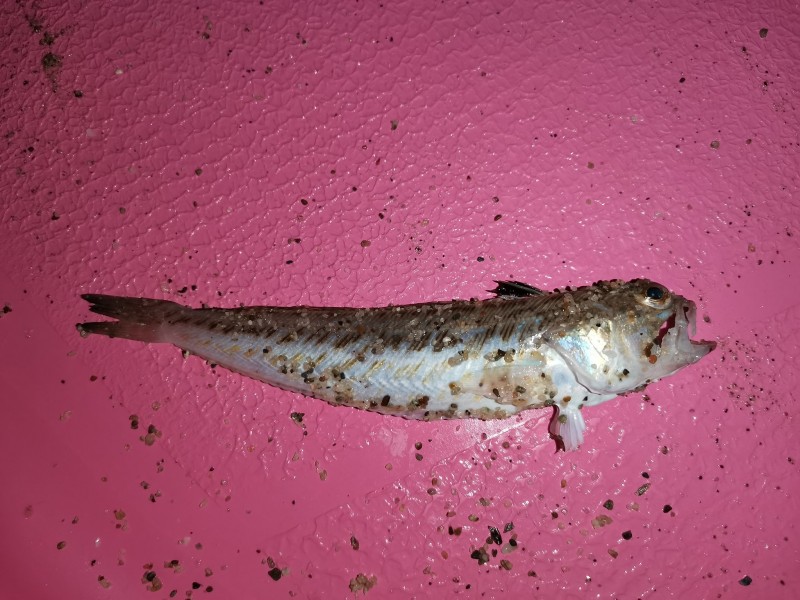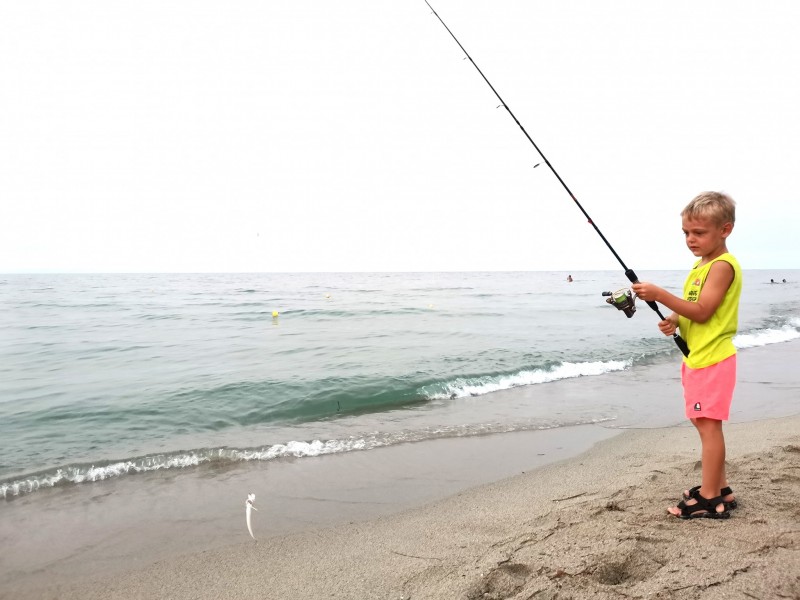Greater weever
(Trachinus draco)
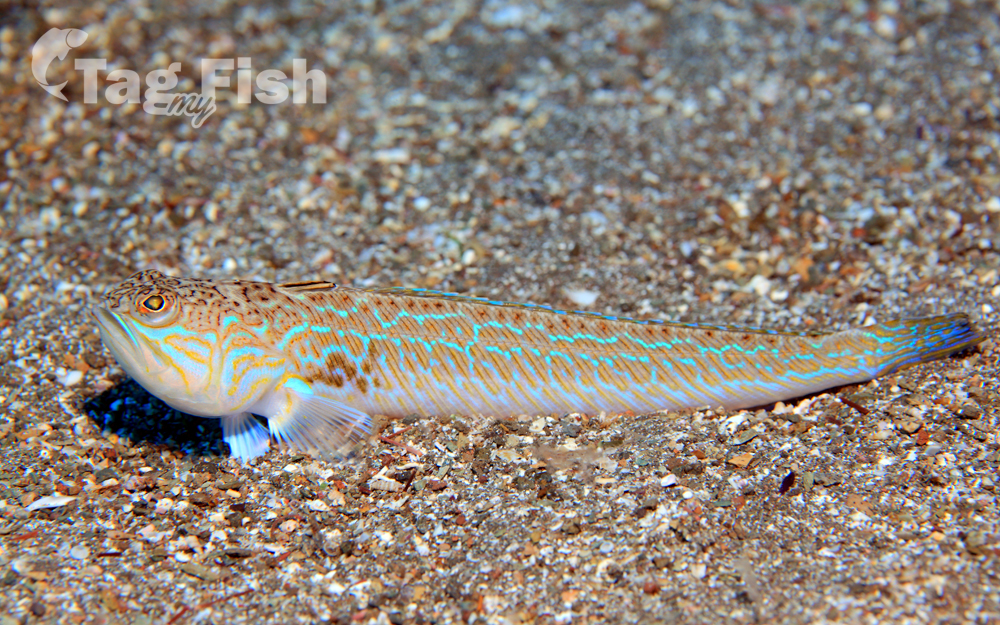
Classification
General data
Trachinus draco is an elongated and laterally flattened fish with upstanding eyes and a distinct superior mouth that is inclined upwards. The lower jaw is longer than the upper jaw. The head is compact flat and relatively big and the eyes sit almost on top of it. The upper rim of the eye has two to three small spines, front of each eye. The five to seven spiny fin rays on its first dorsal fin and the thorns on each of the gill covers have venom glands at their basis.
On its dorsal side, Trachinus draco is coloured in a greenish-brown with a varying count of dark marks on the upper side of the head. The flank is hued in a yellowish-brown with bright blue and yellow discontinuous stripes that run crooked to the front of the fish. Additionally, oblique black stripes can be found laterally.
The body dimensions of Trachinus draco are described very differently by different authors and seem to differ based on the geographical location were the study has been carried out. In the Eastern Black Sea, the length distribution of mature fishes ranges from 10 cm up to a maximum of 25.8 cm for females and from 9.5 cm to 22.5 cm for males. The weight ranges from 6.96 g to 131.76 g for females and from 5.34 g to 75.84 g for males. While the largest female recorded in the Eastern Black Sea was 25.8 cm long, the findings in other studies suggest, that Trachinus draco has a much bigger range in size than that found in this study.
In the Algarve Coast of Southern Portugal the largest female found by Santos et al. had a total maximum length of 39.6 cm. But also in the Black Sea specimens have been observed, that outrange the largest female found by Ak & Genç in 2013. The largest female found by Ak et al. in the Black Sea had a total maximum length of 35 cm.
Trachinus draco is a so-called ambush predator that digs itself into fine sand during daytime only with its eyes and the tip of the dorsal fin exposed. There it lurks until prey emerges which is then attacked by the predator in a swift and sudden manner. During the nighttime, the greater weever is believed to swim around freely, even pelagically.
T. draco is a carnivore that mainly feeds on Decapods, Bonefish (Teleostei), and Opossum shrimps (Mysida) as catches in the eastern-central Adriatic Sea suggest. To a lower extent, their diet contains also Isopoda, Amphipoda, Cephalopoda, and Shells (Bivalvia).
Reproduction and spawning behaviour
The reproduction period of T. draco seems to lasts from June to October. This very broad range is limited by the observations of Ole Bagge (2004) who states that his findings strongly indicate that the spawning time of T. draco is indeed restricted to the period between June and August with a peak in July. Bagge also says that there have been no findings of greater weever in spawning condition from September to May.
T. draco is an oviparous spawning fish that lays its eggs into the pelagic zone. The larvae have a size of about 4.8 mm to 6.8 mm and hatch after approximately three months. The larvae and the eggs can both be found in the pelagic zone and the surface plankton. The larvae of T. draco may have a need for relatively warm water with a relatively low salinity to hatch in greater numbers. T. draco is probably not territorial, even in the mating season. It has not been observed to carry out any form of parental care.
Toxicity
The venomous apparatus of T. draco consists of one spine on each operculum and five to eight dorsal spines. The spines on the operculum point towards the cauda, or tail, and are slightly bent downwards. The opercular spines arise from the upper edge of the operculum and are connected to the operculum with one third of their complete length. The other two thirds of their length lies free along the operculum. The total length of the opercular spines is approximately 27 mm. The spine itself is covered by an integumentary sheath. If this sheath ruptures because there is force applied to the spine, it allows the venom to leak from the venom gland cells and to run through a deep groove along the spine and into the wound caused by the sting.
Each of the dorsal spines is covered in an individual integumentary sheet. The spines are connected through a fine interspinous membrane. The spines have different length and are by that arranged in a curve like manner. The spines observed by Russel & Emery (1960) had minimum lengths of 5 mm and maximum lengths of 29 mm and were quite heterogeneous in their appearance on a microscopic level. The dorsal spines are all bent very slightly towards the tail of the fish. The mechanism of envenomation is quite similar to that of the opercular spines.
Treatment
There are as many recommended treatments for a sting of the greater weever as there are fishermen who were stung by them. These recommendations reach from the application of hot water or vinegar to more arcane methods like fish liver, tobacco juice or the suggestion of burning the devilish weever, swear and pray. The modern medicine does in fact recommend the application of any kind of heat preferably to souse the affected limb into hot water (40-42 °C). Beside this first aid attempt to ease the pain it is recommended to clean the wound and to see a physician because antibiotics, further analgesics or even a tetanus prophylaxis might be appropriate.
